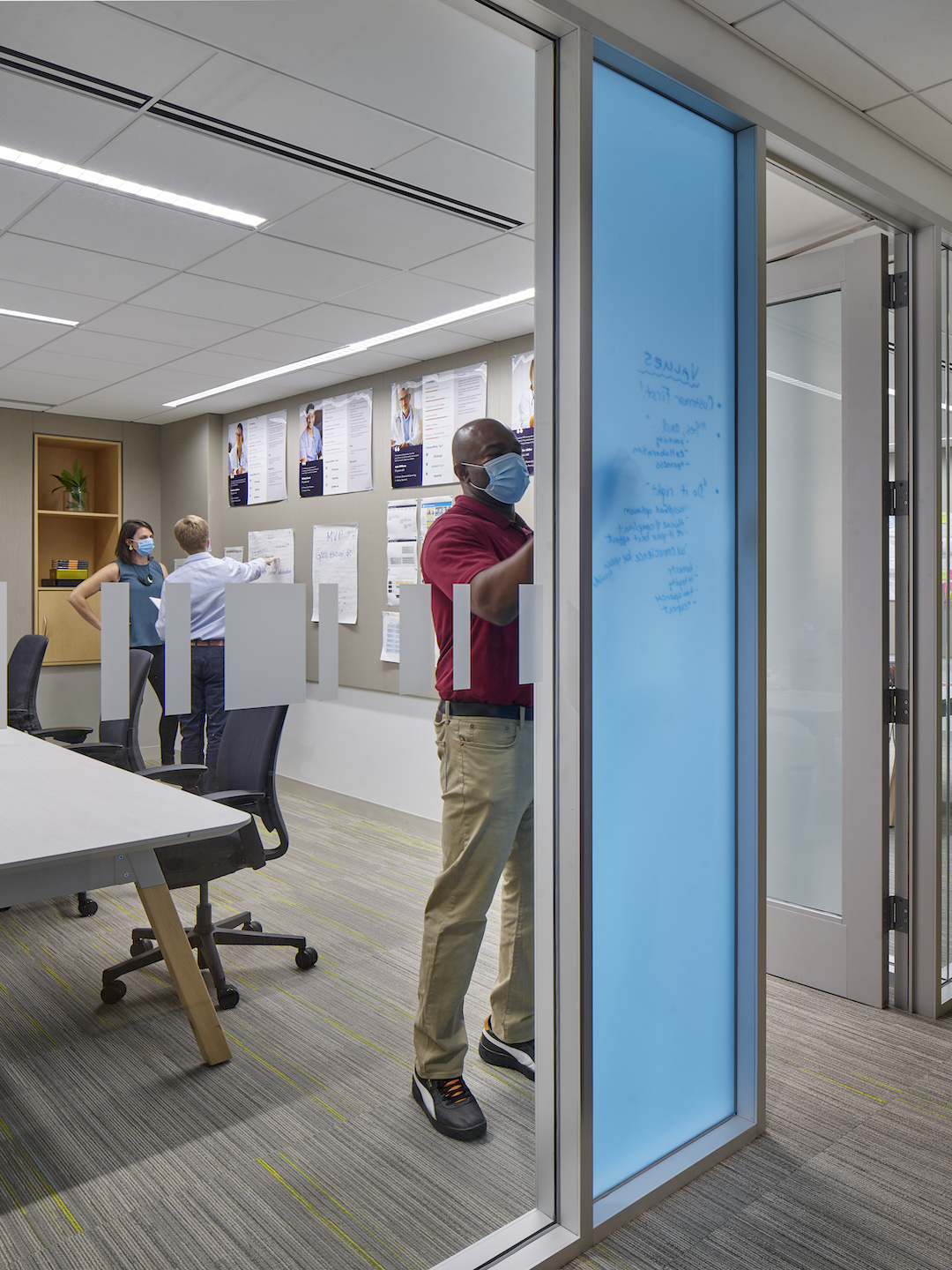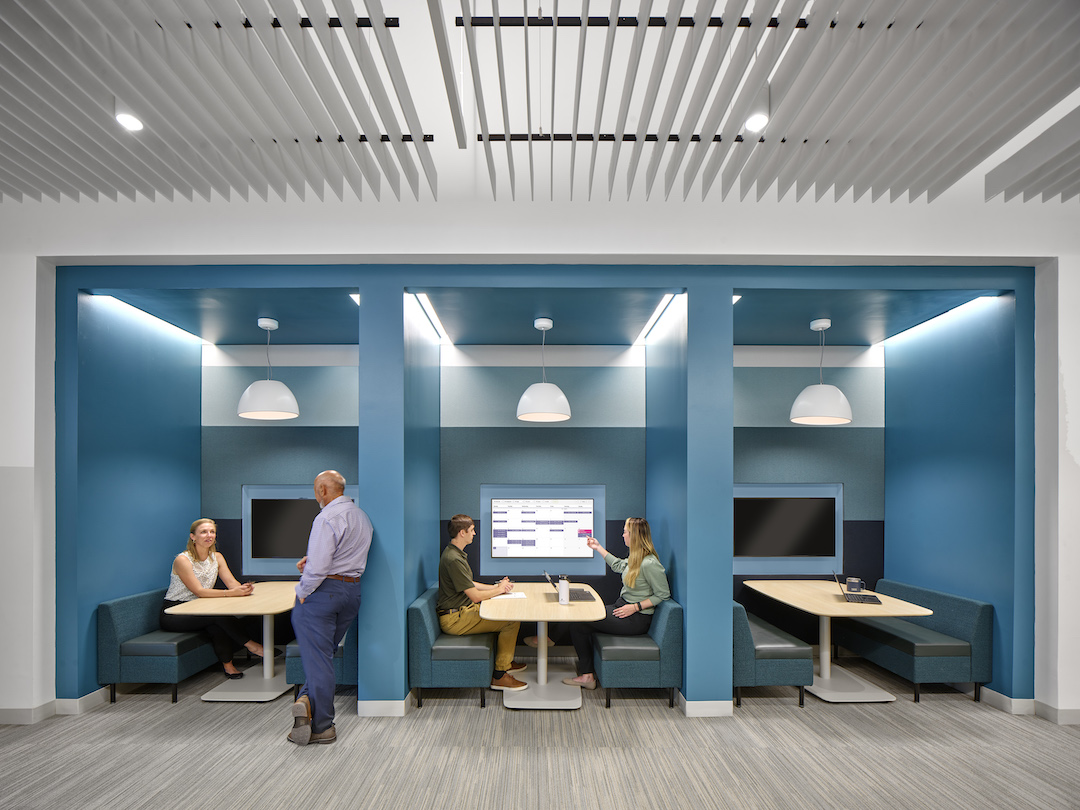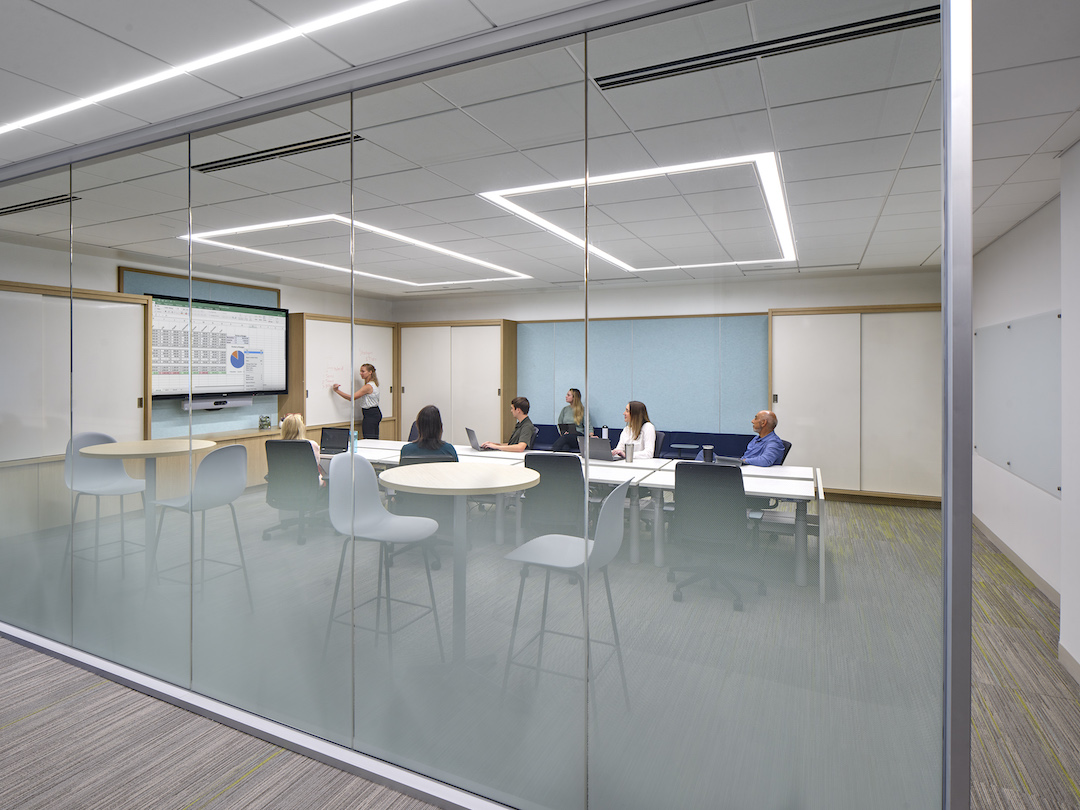In a 1986 Harvard Business Review article, “The New New Product Development Game,” Hirotaka Takeuchi and Ikujiro Nonaka observed that in order to excel in a fast-paced market, companies should emphasize speed and flexibility in product development. They advocated shifting from a linear “relay race” approach to an agile “rugby” approach in which multidisciplinary teams work together on a project from start to finish.
Agile work is an umbrella term used to describe a broad project management philosophy. It is one among many methodologies that contribute to an organizational approach. Although IT developers and start-ups popularized the concept of agile work in recent years, companies have been utilizing methods we now classify as agile for almost as long as the modern office has existed. This is not a new concept, but rather one that is being recycled and reinterpreted for today’s modern, technology-focused future.
Takeuchi and Nonaka adopted one specific component of the game of rugby, the scrum, to further define their method of agile work. In a rugby scrum, players pack closely together with their heads down and bodies interlocked in an attempt to gain possession of the ball. Each player contributes a unique set of skills towards a common goal.
This analogy has been further refined over time by those who have adopted the agile method of work. In the 2017 edition of “The Scrum Guide,” by Ken Schwaber and Jeff Sutherland, the agile team (or scrum) is a highly adaptive, purposefully small team that operates under defined rules, roles, events, and artifacts in order to develop, deliver, and sustain complex and innovative solutions. Teams are built on the three pillars of 1) transparency, 2) inspection (which we are labeling introspection), and 3) adaption, requiring members to embrace the values of commitment, focus, openness, respect, and courage.
As observed by Takeuchi and Nonaka, successful agile teams are intentionally built to include diverse points of view and purposefully eliminate a sense of hierarchy. In a follow-up publication, “Embracing Agile,” Rigby, Sutherland and Takeuchi acknowledge the scrum/agile method is an investment that requires training, behavioral change, and new tools.
HOW THE SCRUM APPLIES TO TODAY'S WORKPLACE
In 2021 we are returning to a workplace that was designed to support an obsolete way of working. As companies move toward a hybrid model of virtual and in person work, they are investing in workspace designs that support a more resilient, technology-dependent workforce comfortable working in pods and scrum-like networks.
Accelerated by the pandemic, the rise of collaboration, and a rapidly increasing reliance on technology, more organizations are moving toward agile methods. As everyone now has an individual work seat at home, the physical office environment’s primary value comes in supporting the team, ideally through Schwaber and Sutherland’s three pillars: transparency, inspection and adaptation.
The challenge comes in providing space that can uphold the three pillars, create equity, encourage conversation, and reinforce team values while still providing the flexibility to accommodate individual skill sets and ways of work. In a post-pandemic world, these spaces should also focus on technologies that allow remote team members to interface with their in-office counterparts in a way that ensures them a seat at the table.
TRANSPARENCY – SETTING THE COMMUNAL TABLE
Transparency across the agile team manifests through space when individual work areas are centrally located, often at a communal table, thus allowing for fluid exchange of ideas. The community that forms from working together also leads naturally to leveling the playing field in terms of hierarchy, which helps to foster a sense of team territoriality and belonging.

The scrum framework prioritizes visibility. Transparent and translucent glass can balance collaboration, privacy, and access to natural light. Photo: © Halkin Mason Photography
Creating this team area as a safe place to experiment, make mistakes, and adapt outside of the watchful eye of management is a key component of agile work.
A space that can be physically closed off and made private empowers the group to manage their own environment as appropriate for each phase of development.
Anticipating and building in effective plug-and-play technology increases transparency across the in-person and remote team.
Providing literal transparency through glass walls and other architectural solutions can help the team better control their environment, sharing or closing down when needed.
INTROSPECTION – CREATING SPACE FOR HEADS-DOWN WORK
Providing settings for introspection – or in the language of the scrum framework, inspection – enables moments of solitude to support neurodiversity, which is essential to innovation.
Spaces that support “heads down” work are often at odds with a team room setting. Providing focus rooms and small break-out spaces, either within the team space or adjacent, allows members room to review progress and concentrate on their specific contribution to the team. It allows for smaller groups to break off to develop ideas independently before introducing them to the team at large.

Collaboration booths with access to AV technology enable introspection and contribute to a neurodiverse environment. Photo: © Halkin Mason Photography
Giving people autonomy to change their work setting, even for short periods of time, allows them to recharge and refocus. Providing quiet spaces accommodates team members who are sensitive to the stimuli of a typical open office environment.
ADAPTATION
One of the most significant benefits of working in an agile team is that it builds resiliency in members. The cyclical nature of the scrum process – the frequent check-ins and realigning of values and goals – compel teams to adapt quickly to change. If this was not a valued attribute in a pre-pandemic world, it certainly is now.
Agile workspace designs accommodate growth and enable adaptation. Supportive technologies and spatial features such as movable furniture and wall surfaces allow innovation to literally be seen.
As we move into a new paradigm of work, we need to evaluate what won’t change – core values, basic human needs, and common infrastructure – and assume everything else will.

Continuous improvement relies on the ability to adapt to change. Adjustable height tables, movable furniture, writable surfaces and pin-up space maximize adaptability. Photo: © Halkin Mason Photography
In a recent Steelcase poll, employees in the U.S. ranked isolation, decreased engagement, and the speed of decision-making as the top three challenges of remote work.
Agile team spaces are essential components of the future office landscape and have the ability to ensure that teams feel supported by their work environment.
About the authors
Katherine Ahrens, LEED AP, is an Associate Principal and Interiors Studio Lead at Ballinger. Kate Hallinan, NCIDQ, is an Associate at Ballinger.
Sources
Takeuchi, Hirotaka and Ikujiro Nonaka,“The New New Product Development Game,” Harvard Business Review January 1986.
Schwaber, Ken and Jeff Sutherland. The Scrum Guide – The Definitive Guide to Scrum: The Rules of the Game. Ken Schwaber and Jeff Sutherland, 2017 at: https://scrumguides.org/docs/scrumguide/v2017/2017-Scrum-Guide-US.pdf.
Rigby, Darrell K., Jeff Sutherland, and Hirotaka Takeuchi, "Embracing Agile: How to master the process that’s transforming management," Harvard Business Review, May 2016.
Related Stories
| Sep 23, 2013
Six-acre Essex Crossing development set to transform vacant New York property
A six-acre parcel on the Lower East Side of New York City, vacant since tenements were torn down in 1967, will be the site of the new Essex Crossing mixed-use development. The product of a compromise between Mayor Michael Bloomberg and various interested community groups, the complex will include ~1,000 apartments.
| Sep 20, 2013
August housing starts reveal multifamily still healthy but single-family stagnating
Peter Muoio, Ph.D., senior principal and economist with Auction.com Research, says the Census Bureau's August Housing Starts data released yesterday hints at improvements in the single-family sector with multifamily slowing down.
| Sep 19, 2013
What we can learn from the world’s greenest buildings
Renowned green building author, Jerry Yudelson, offers five valuable lessons for designers, contractors, and building owners, based on a study of 55 high-performance projects from around the world.
| Sep 19, 2013
6 emerging energy-management glazing technologies
Phase-change materials, electrochromic glass, and building-integrated PVs are among the breakthrough glazing technologies that are taking energy performance to a new level.
| Sep 18, 2013
Annual SteelDay to include 125 free events around the U.S.
Hosted by the American Institute of Steel Construction (AISC), its members and partners, SteelDay invites the AEC community and the public to see the contributions the industry has made in the design and construction of steel buildings and bridges.
| Sep 18, 2013
WHR Architects opens first European office, in Copenhagen
WHR Architects has opened its first European office in Copenhagen, Denmark. The decision to locate in the Danish capital was spurred by the Danish healthcare system’s initiative to renew and expand their facilities across the country.
| Sep 17, 2013
NCARB convenes special task force to explore additional pathways to architectural licensure
Potential new pathways to architectural licensure are being explored through the work of a new Licensure Task Force launched by the National Council of Architectural Registration Boards (NCARB). Led by NCARB Immediate Past President Ronald B. Blitch, FAIA, FACHA, NCARB, the group held its first meeting at NCARB offices on September 6-7 in Washington, DC.
| Sep 17, 2013
SMPS Foundation announces new business development research book
The SMPS Foundation has released its latest research book, A/E/C BUSINESS DEVELOPMENT – The Decade Ahead.
| Sep 17, 2013
Healthcare project will merge outpatient clinic with YMCA to promote wellness and prevention
Penrose-St. Francis Health Services and the YMCA of the Pikes Peak Region announce collaboration, along with developer The Boldt Company, to create next-generation wellness facility.
| Sep 17, 2013
AIA sees uptick in architecture billings for August
AIA's Architecture Billings Index was 53.8 in August, up from 52.7 the previous month, signaling increased demand for design services nationwide. The West and Northeast regions saw the biggest ABI gains last month.













